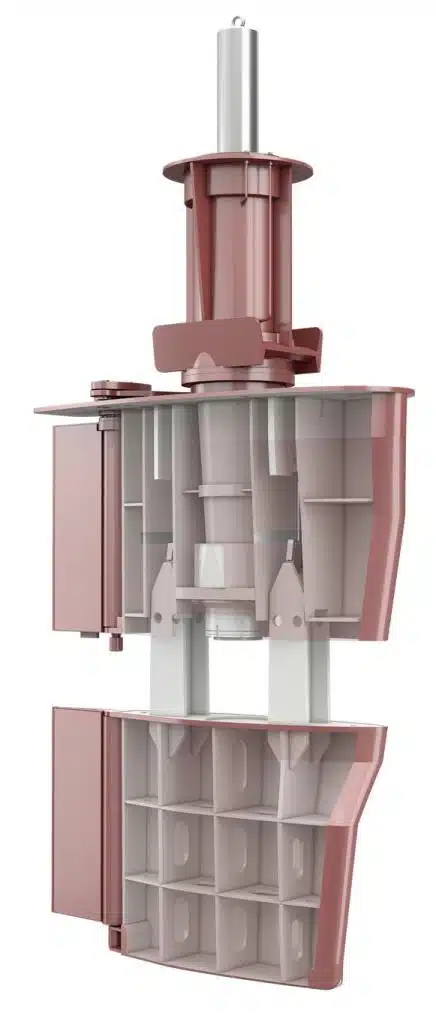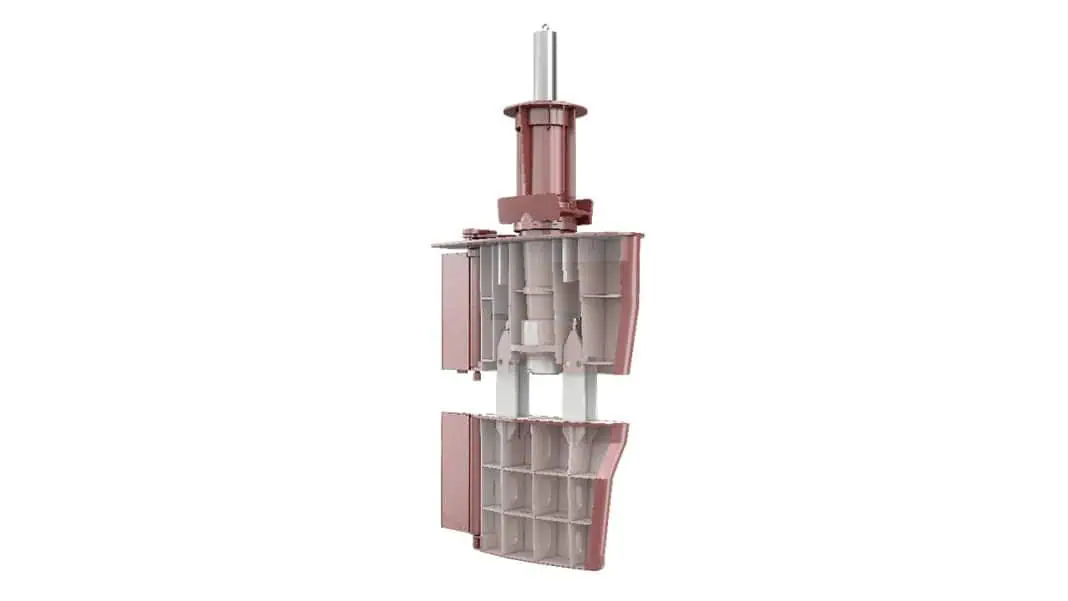Kongsberg Maritime (KONGSBERG) announces the launch of its new Direct Trunk Support (DTS) system for rudders. The new system transfers the manoeuvring forces from the rudder through the headbox and the steering gear deck directly into the hull structure, promising improved manoeuvring, propulsion performance and weight savings that can ultimately save fuel and help cut emissions.
The DTS rudder has no upper size limit and works for vessels of any size, from container ships to fishing vessels, and in any segment, from naval ships to superyachts. It eliminates the radial forces and bending moment transferred from the rudder blade to the steering gear. This is accomplished with an extended pipe integrated into the rudder trunk. This means that the rudder stock (torque shaft) in the DTS system only transfers torque and axial loads.

Some of the most important benefits of the new DTS system come in the design phase of a ship. The improved load distribution gives ship designer more flexibility in the aft ship design, which enables a lower positioned steering gear deck. This gives greater storage capacity to any vessel. The DTS system also gives ship owners the option to choose smaller steering gear, since the DTS system only transfers torque load.
The improvement in load distribution allows more freedom in the design of the rudder blade. Higher aspect ratios and slimmer, full-spade rudder designs are possible, which improves the overall performance of the vessel. When combined with KONGSBERG’s PROMAS system, which integrates the propeller and rudder into a single system to improve hydrodynamic efficiency, the potential for DTS technology is even greater. The new design freedom for rudders and propellers together allows for remarkable improvements in propulsion efficiency and fuel savings.
Adoption of the DTS system means heavy casted items are no longer needed, which yields improved competitiveness for larger rudders through weight savings and reduced lead time. Also, the split rudder design reduces the weight of individual components and makes them safer to handle during manufacturing and installation.
“Today, replacement and modernisation of propulsion and manoeuvring systems are key drivers for newbuilds and aftermarket sales,” said Andreas Malmkvist, SVP Propeller & Shaftline Systems. “From 2023, EEXI and EEDI will set new minimum requirements for the energy efficiency of existing and new ships. Ship owners will start to look for new solutions to meet the accelerating regulations and improve fuel consumptions and operating cost,” he added. “For KONGSBERG, DTS is a significant opportunity to cover a larger market and provide customers with a long-term solution to help them meet their goals.”
KONGSBERG has supplied over 4000 rudders to ship owners and builders over the past 40 years across a wide range of ship types.












